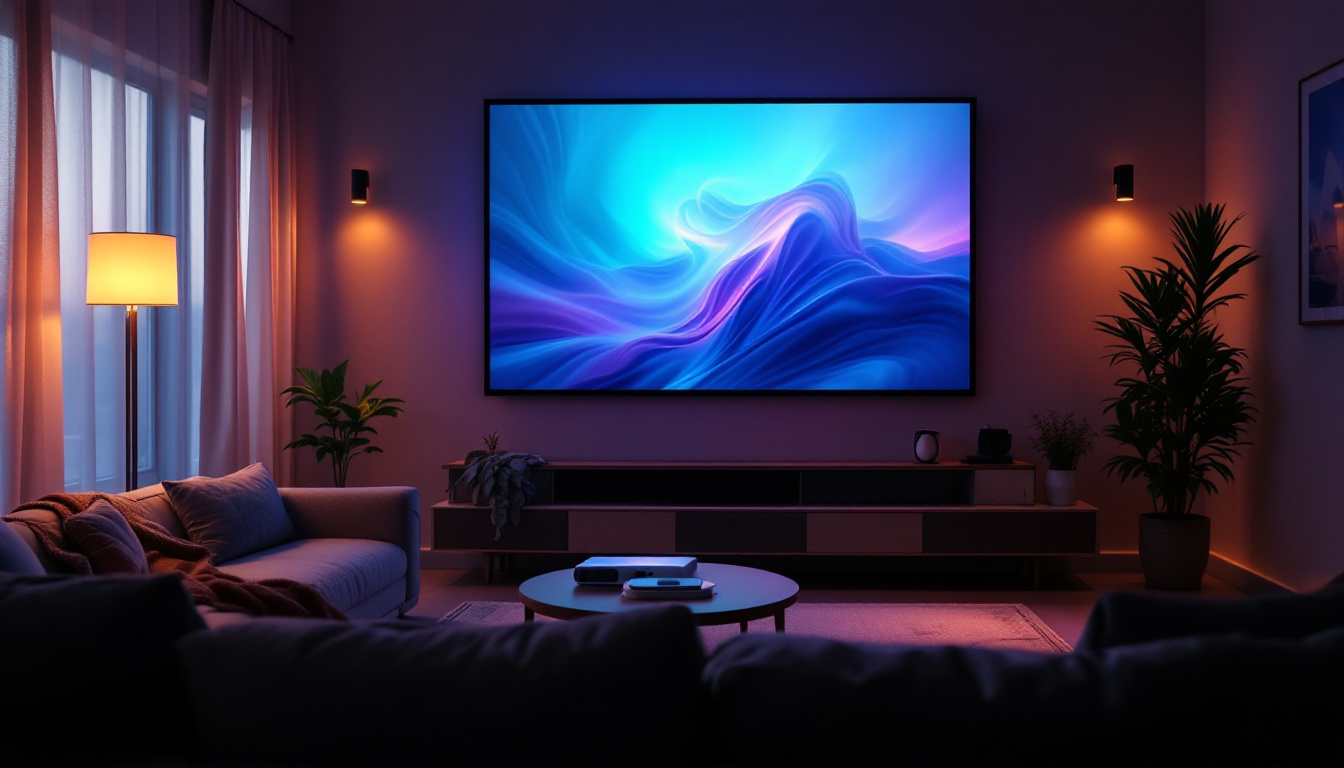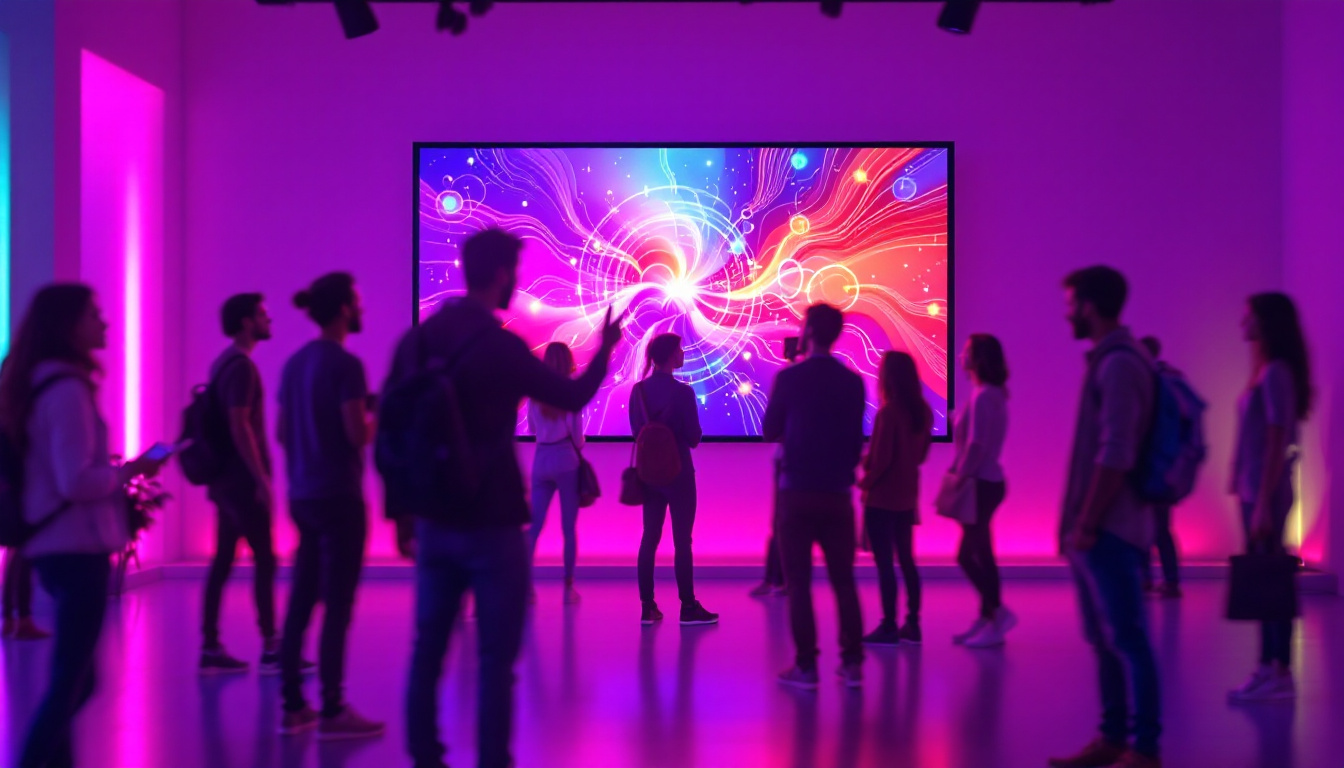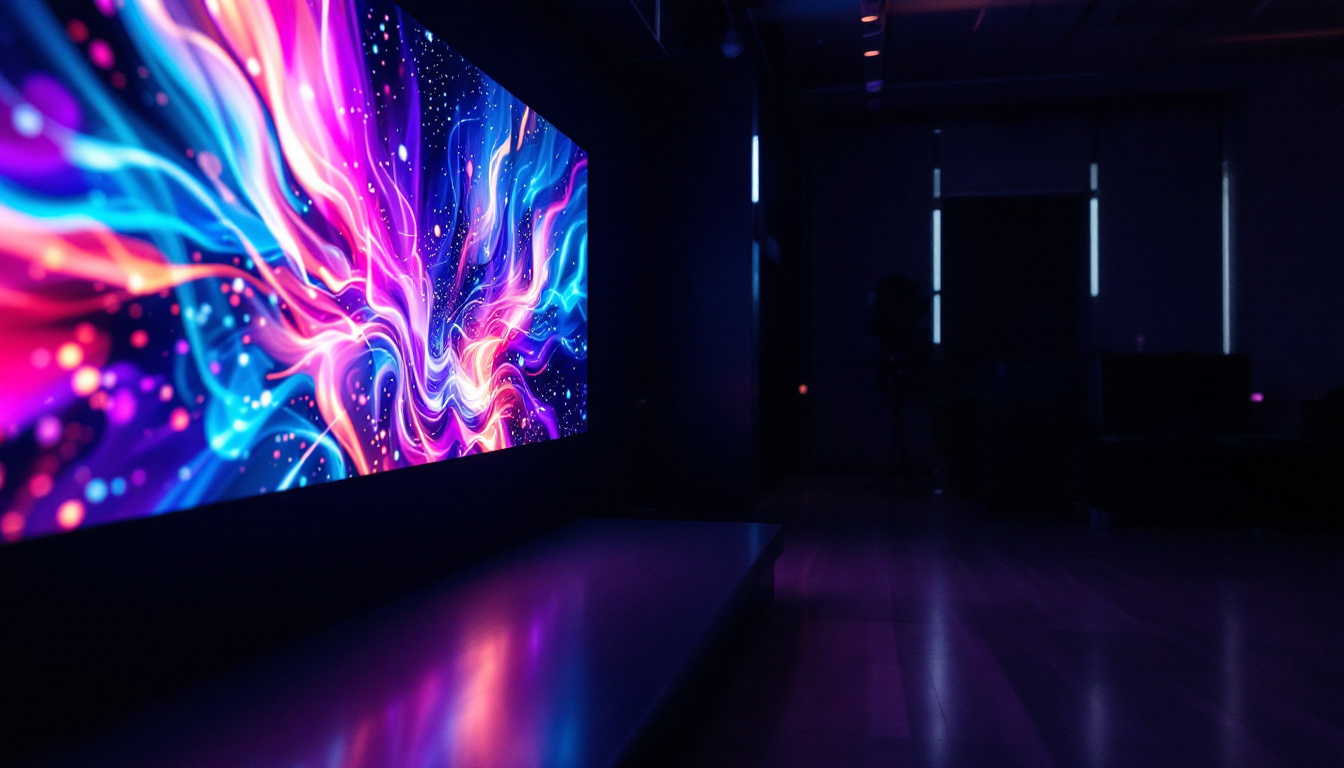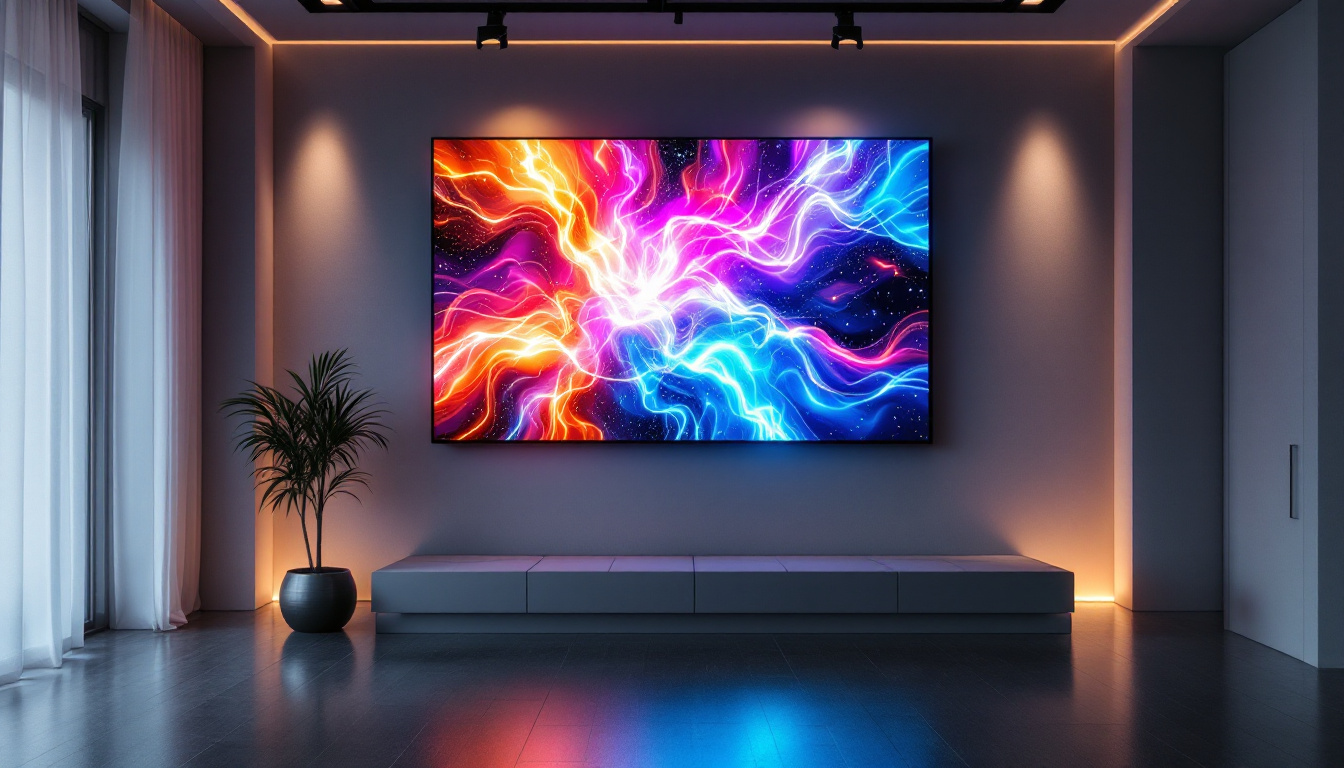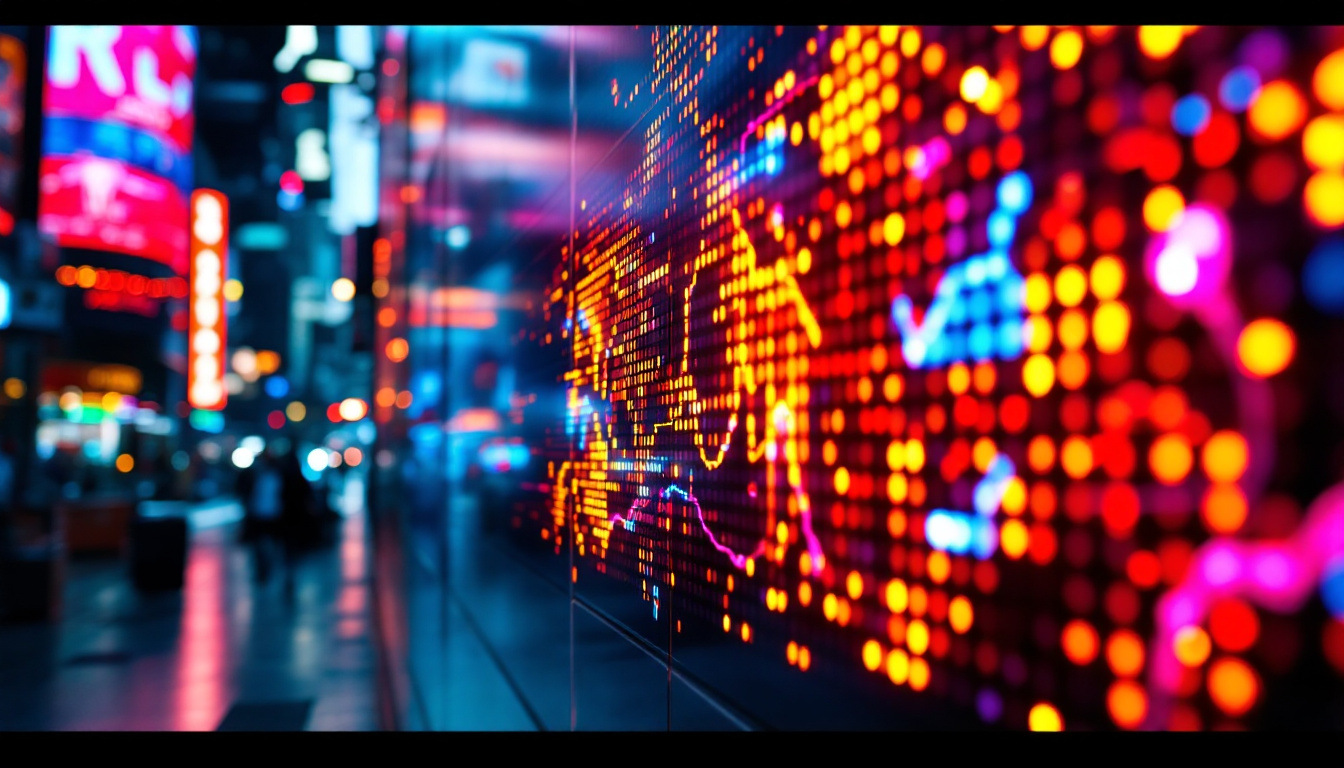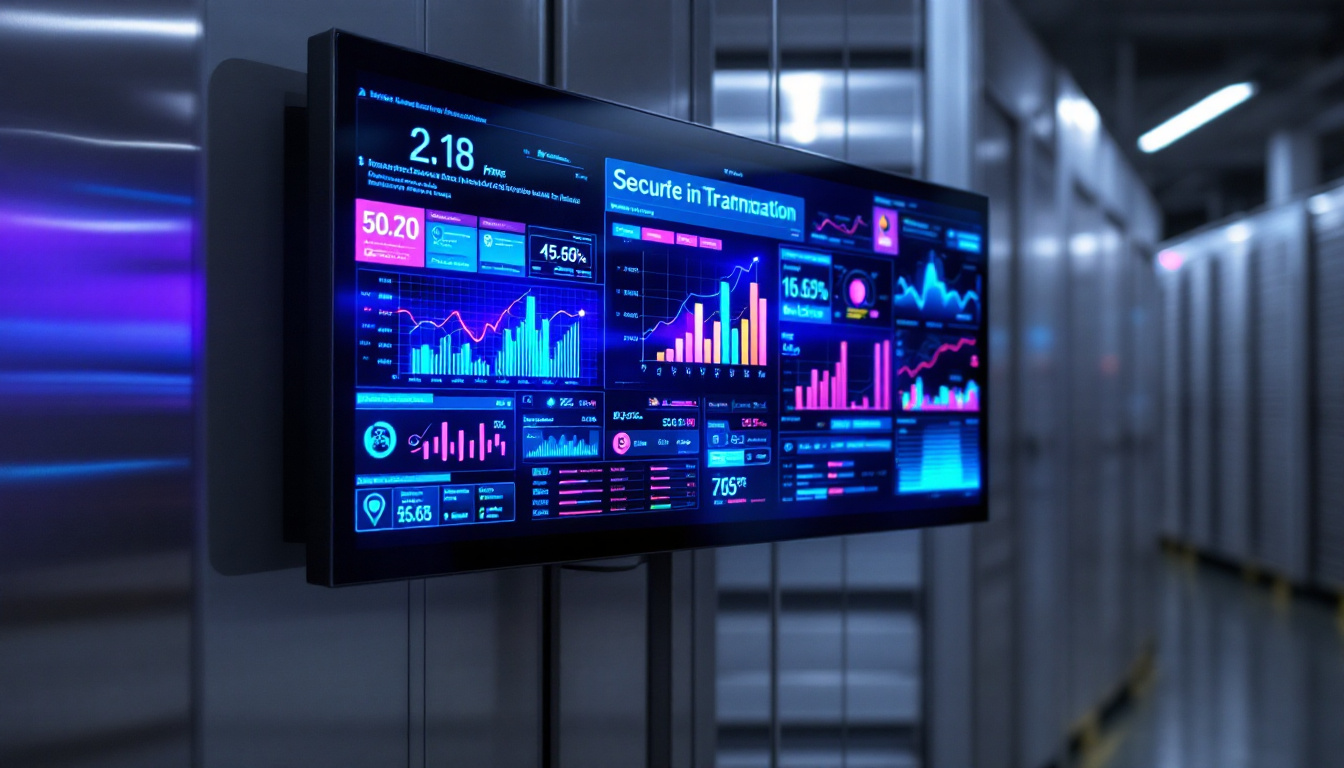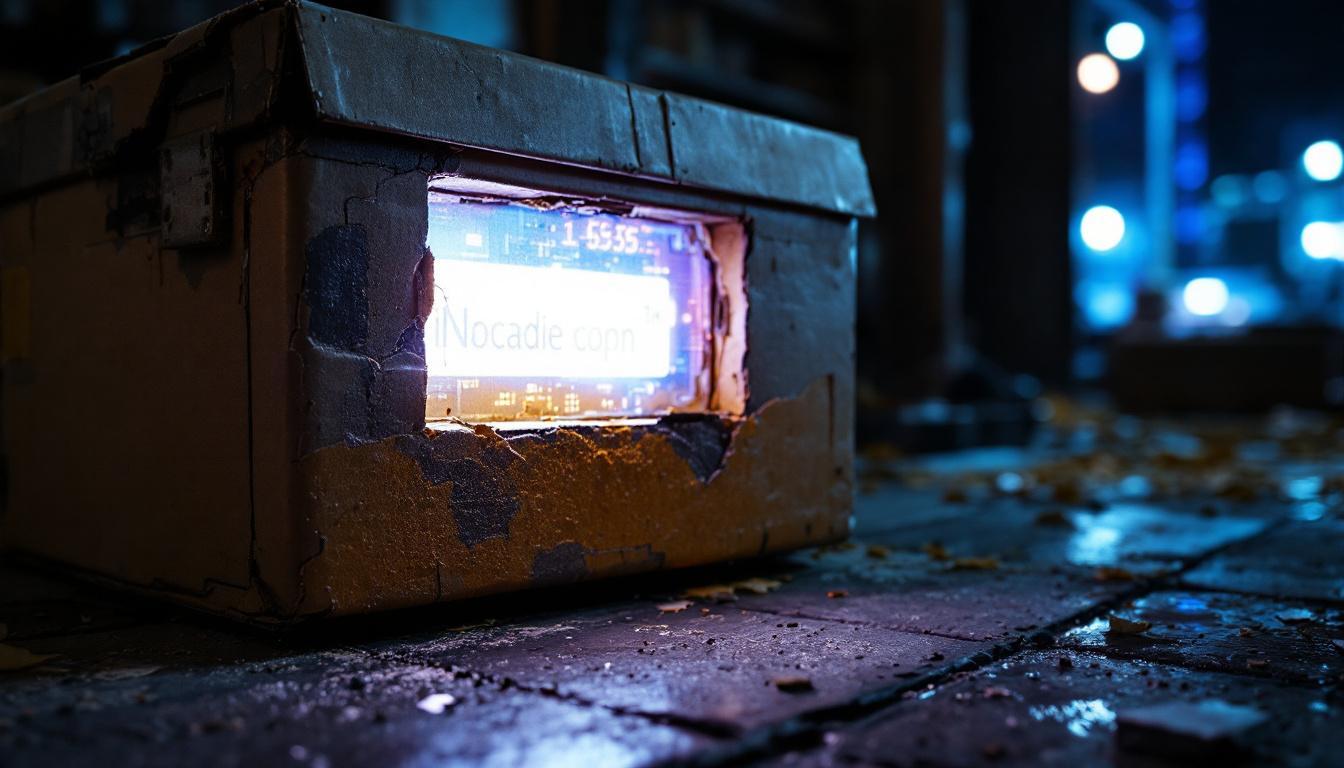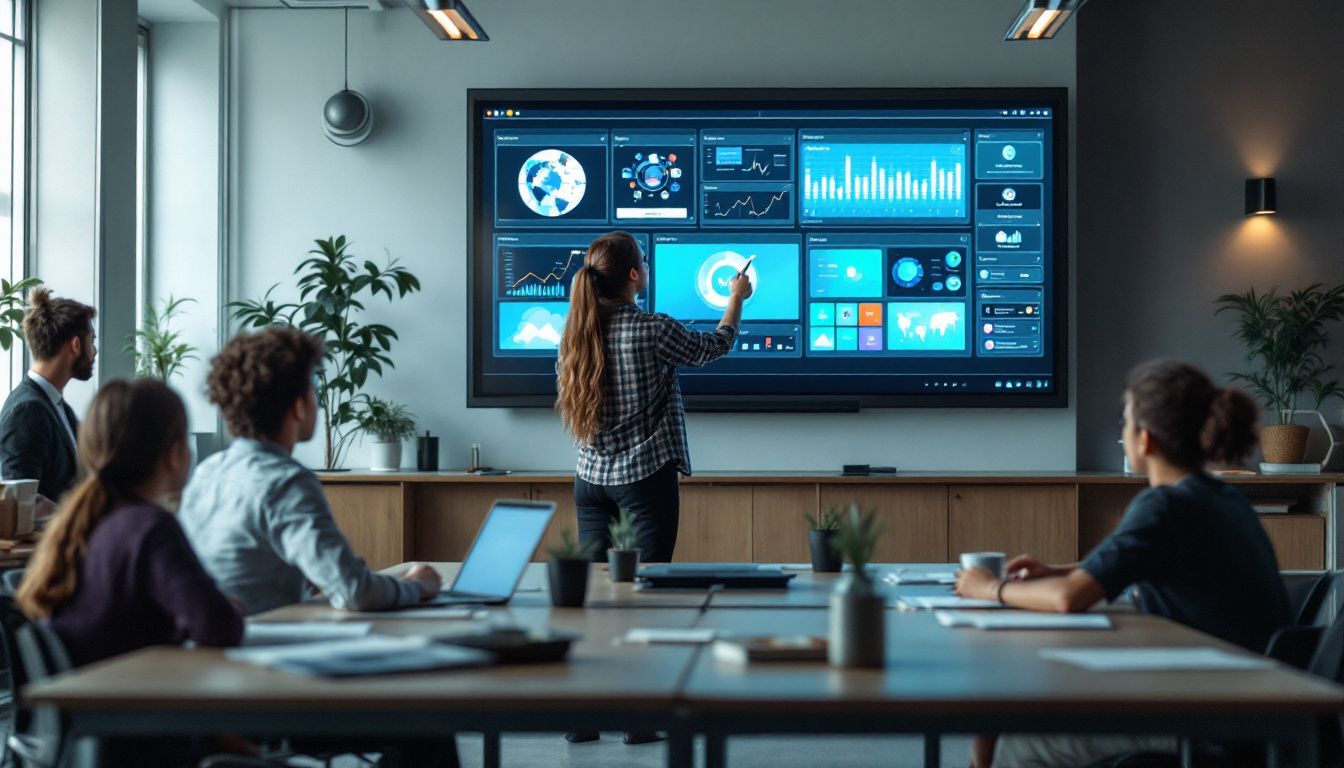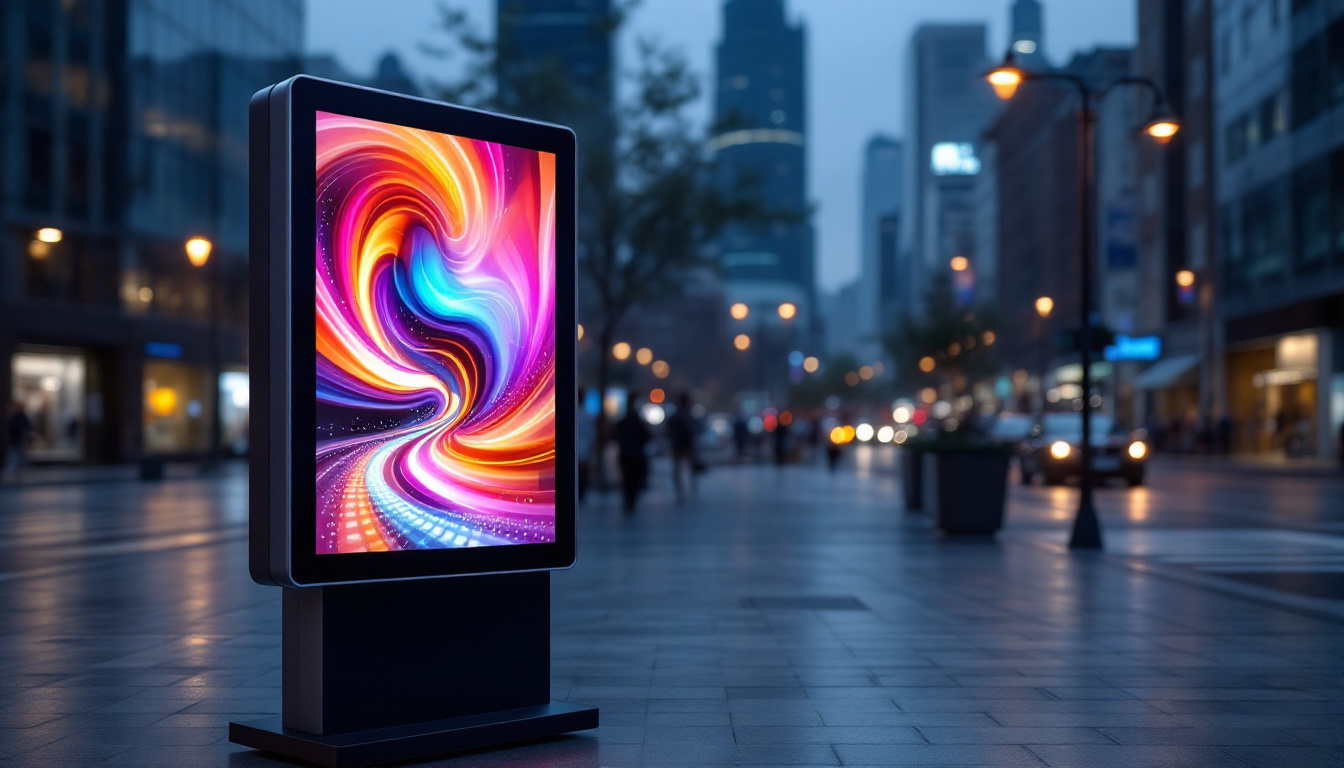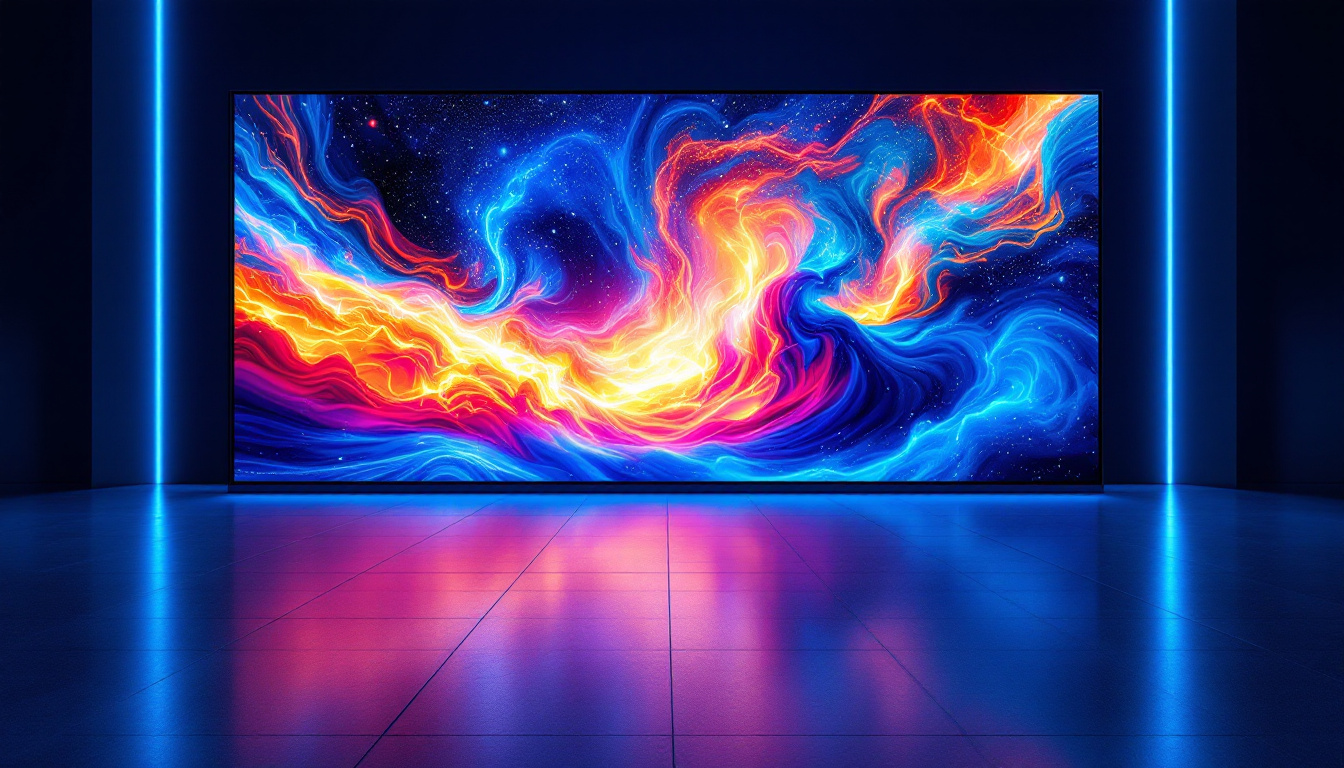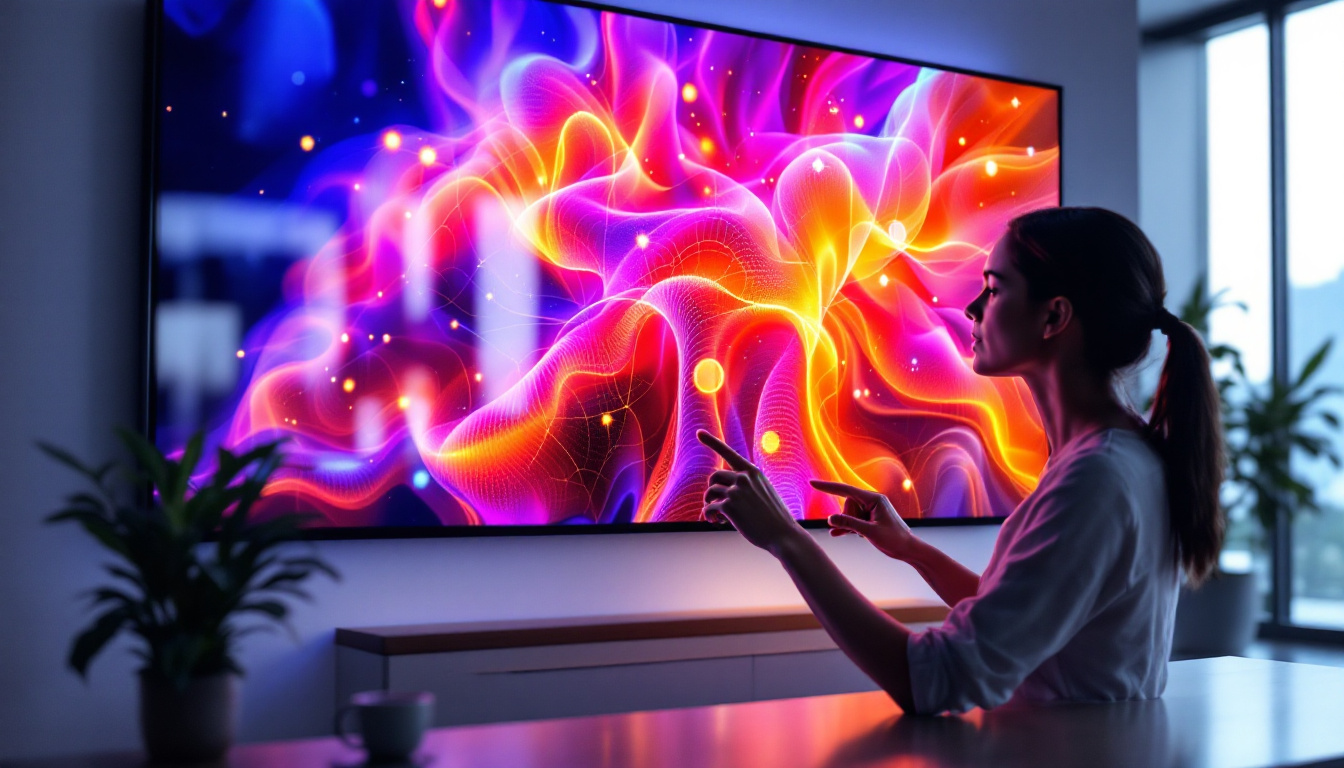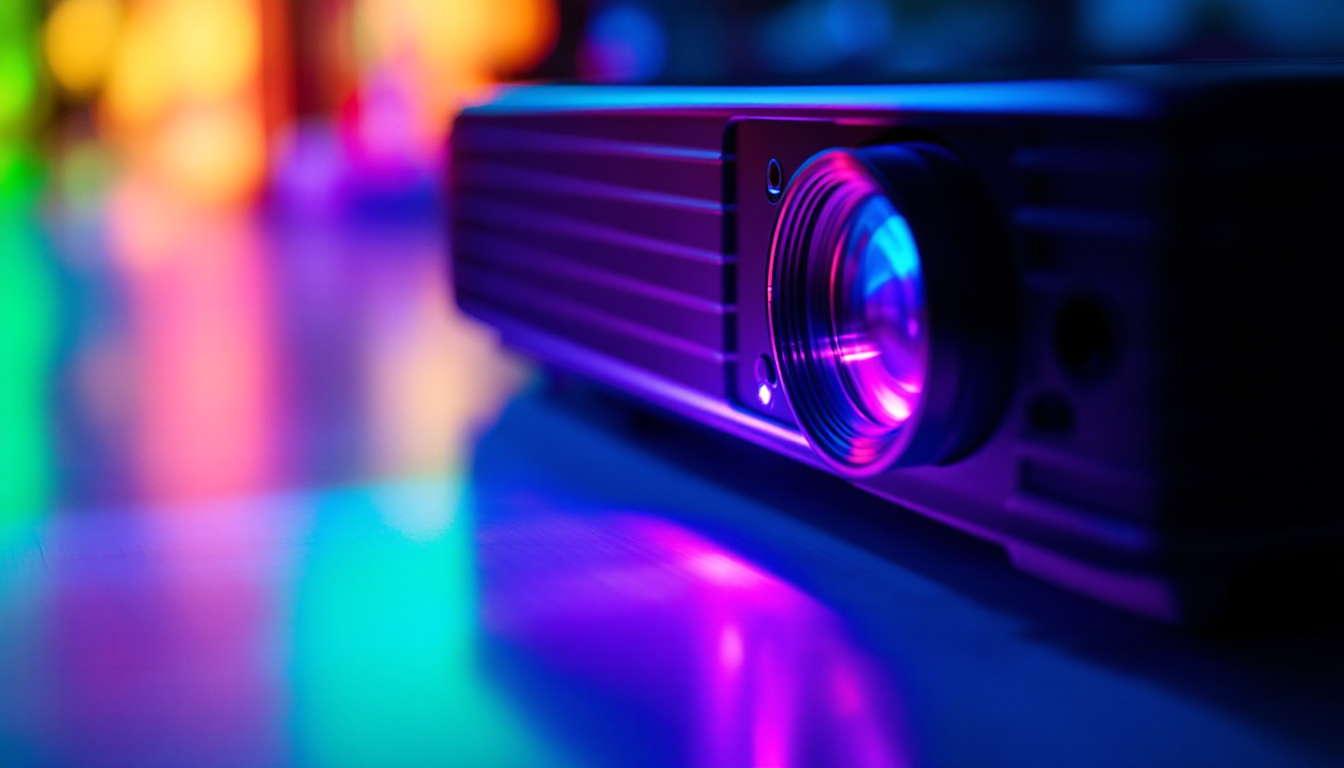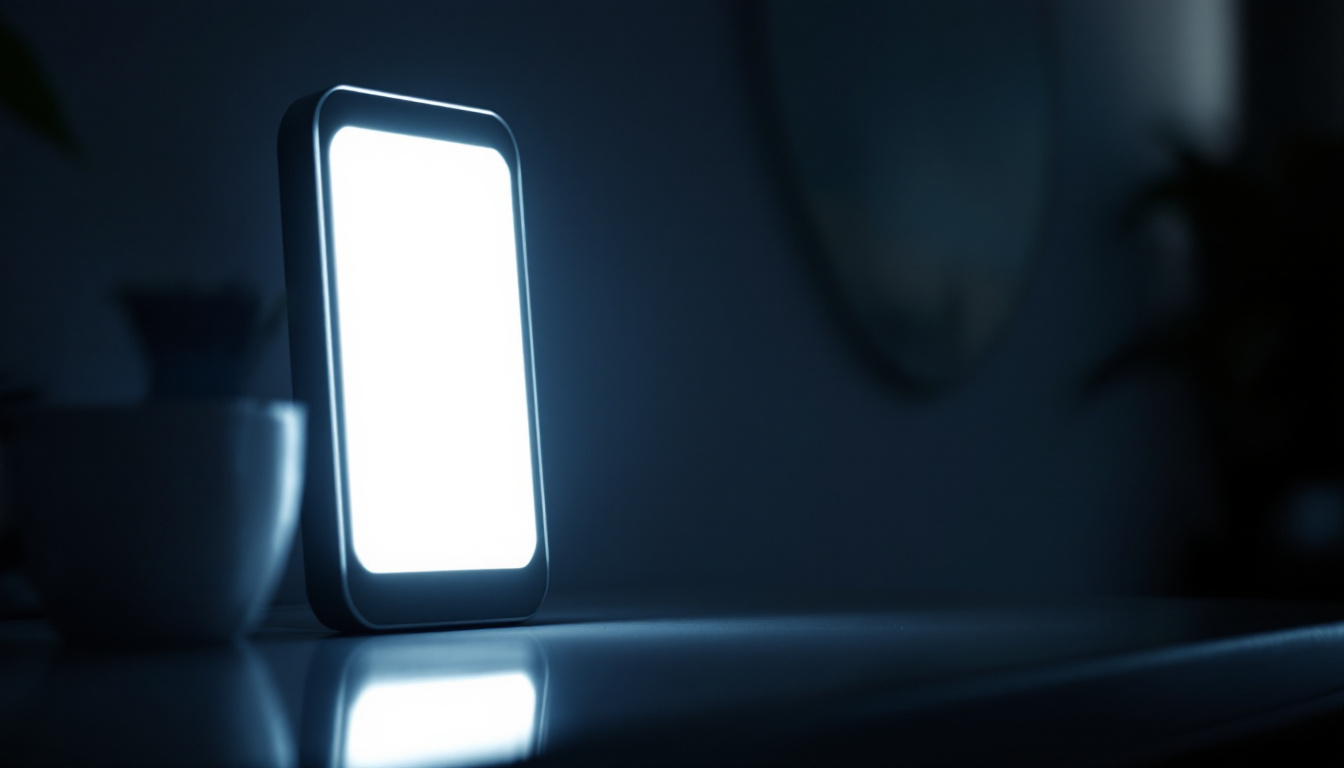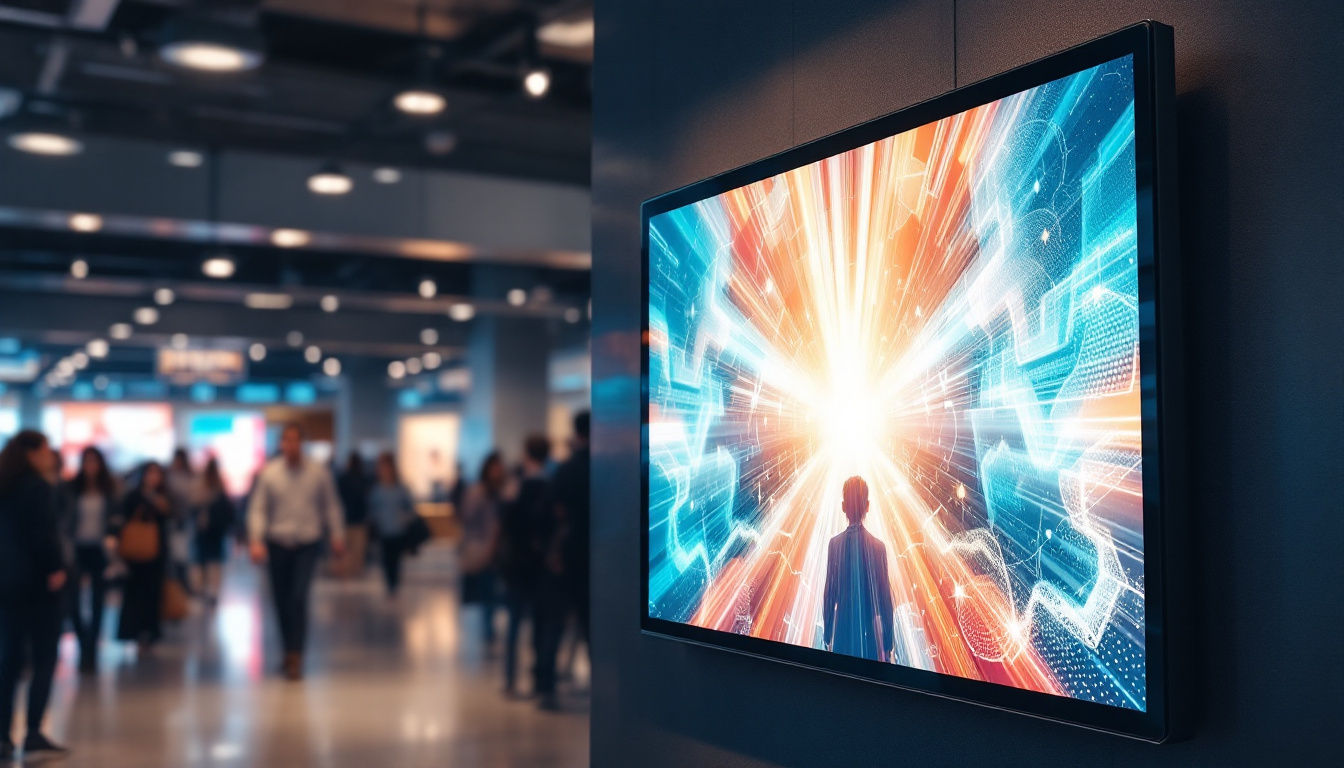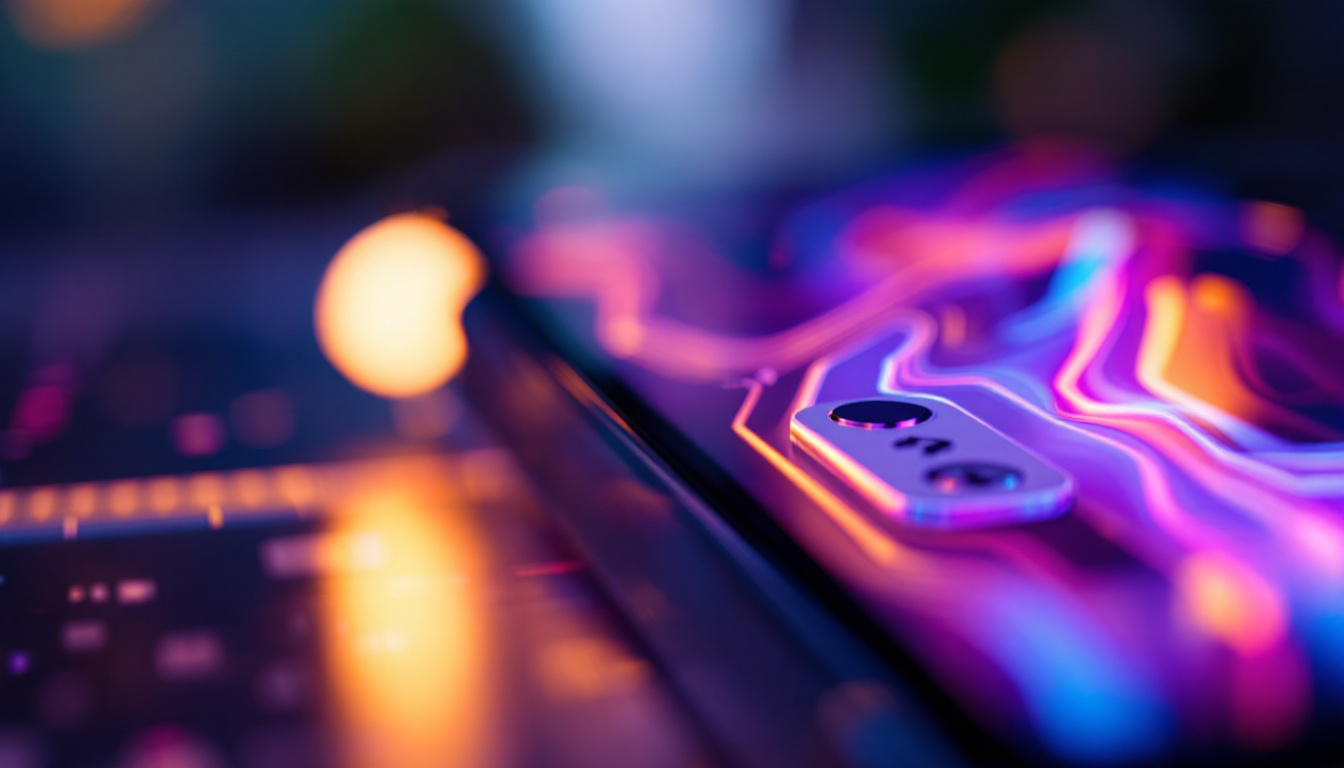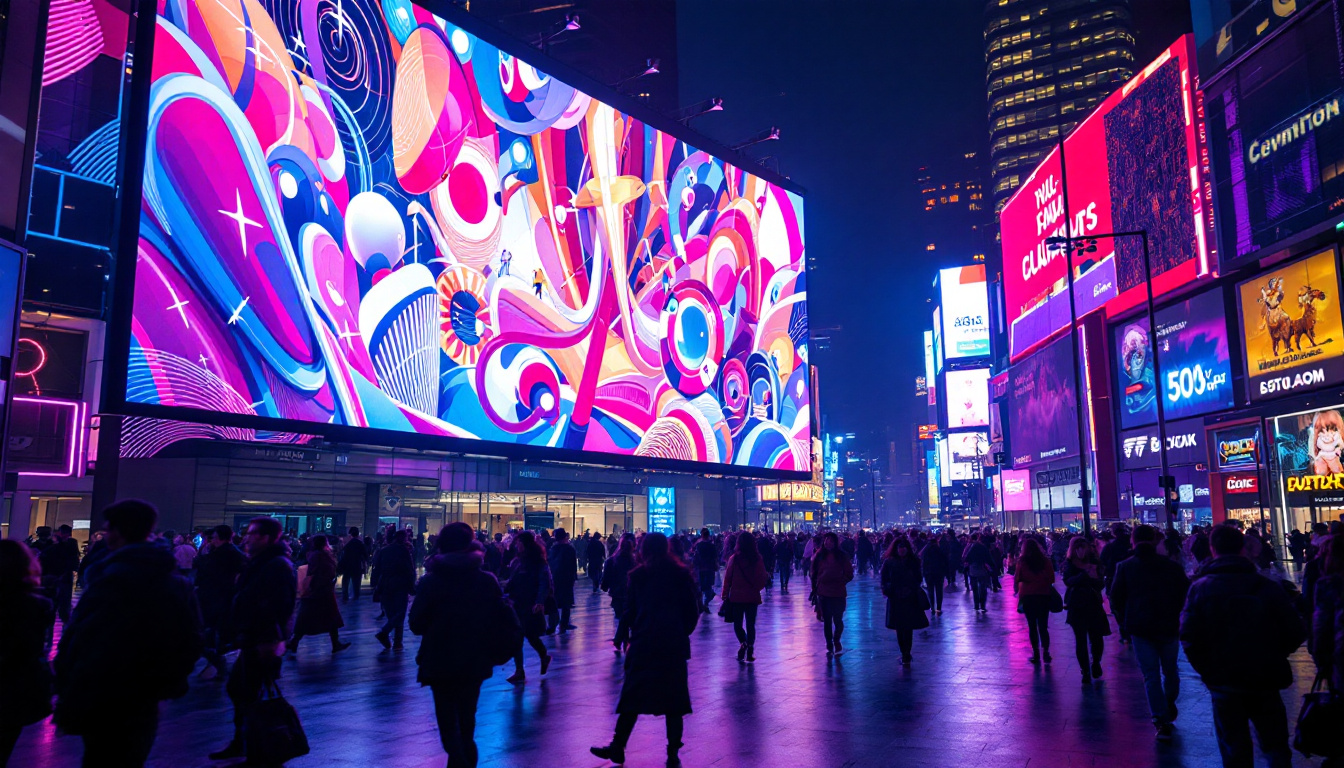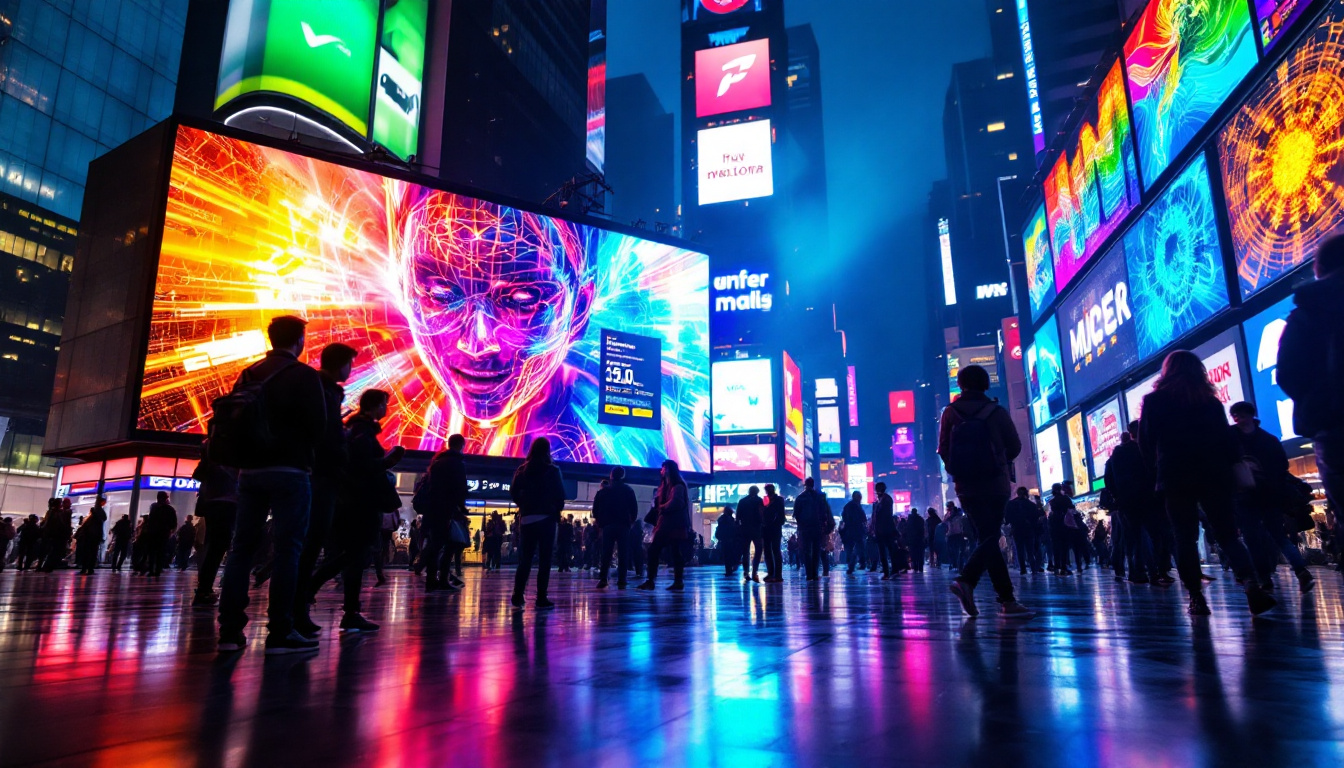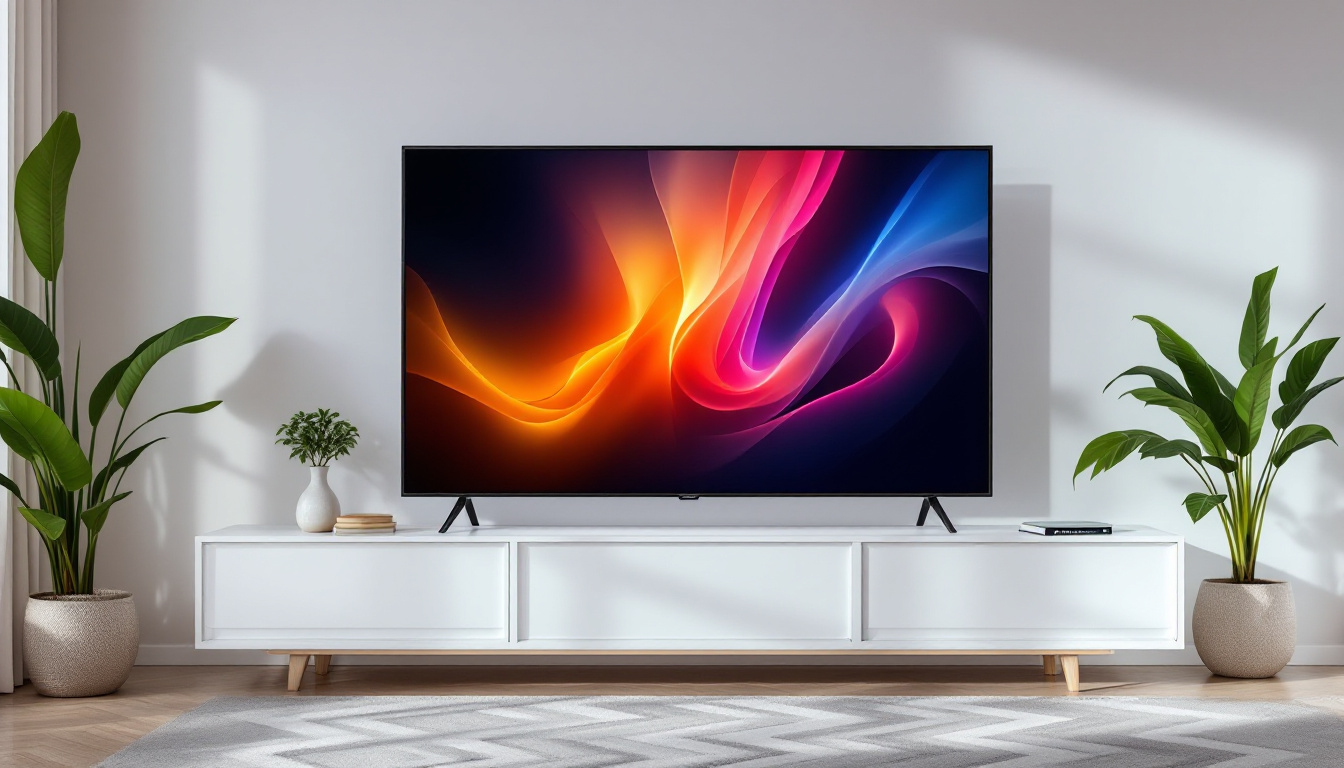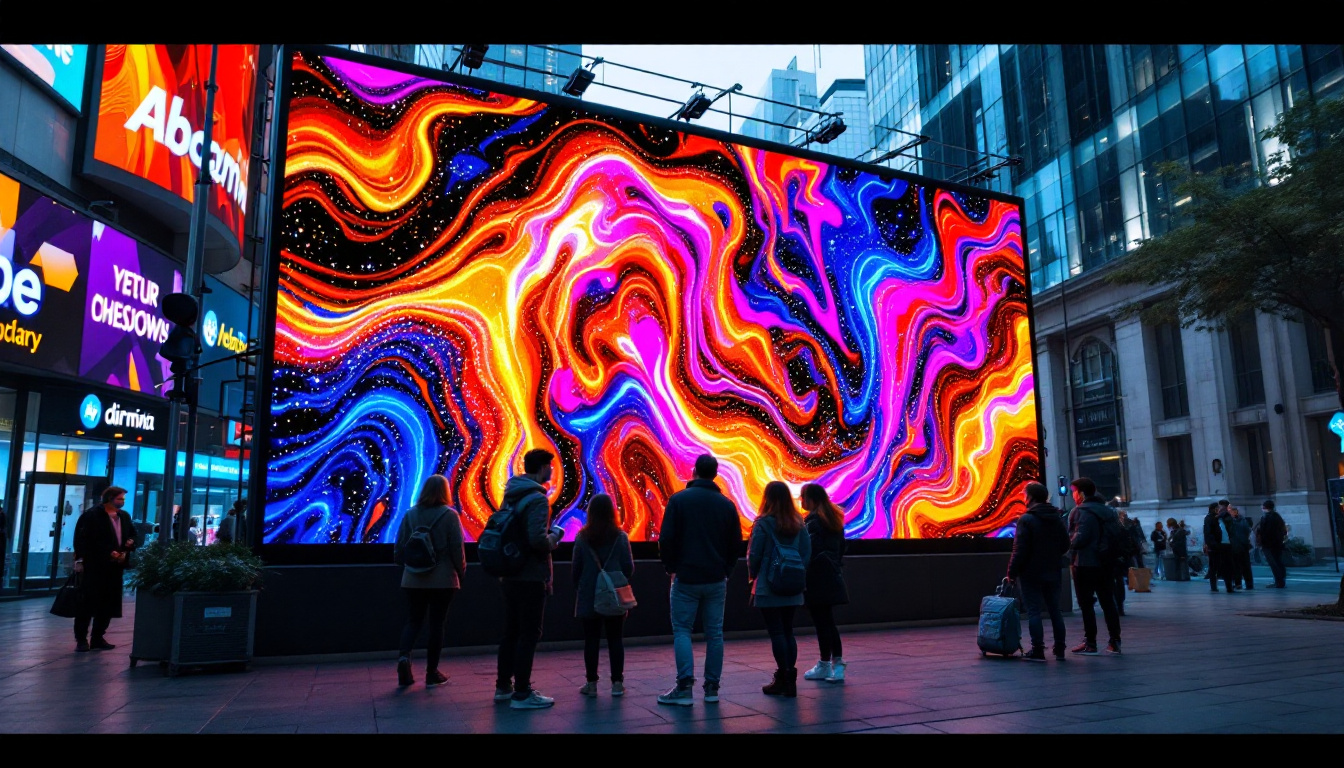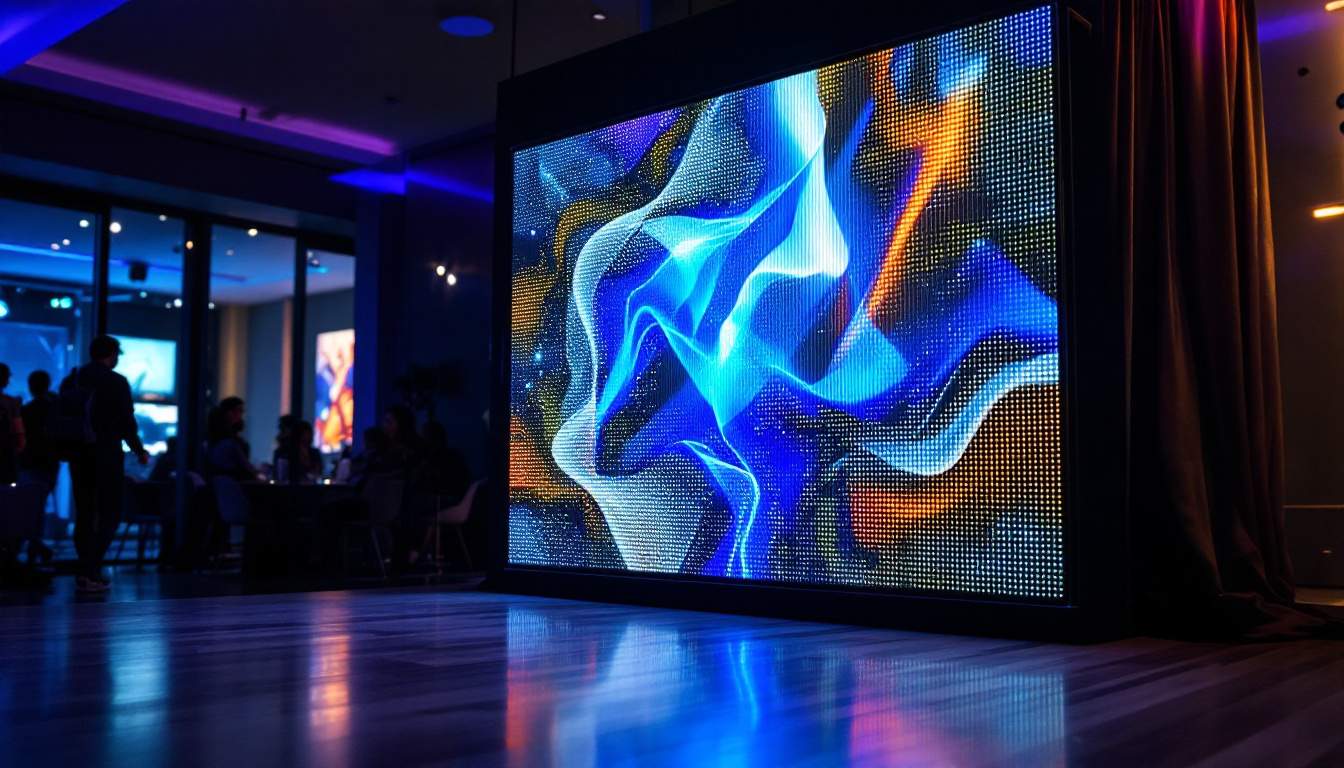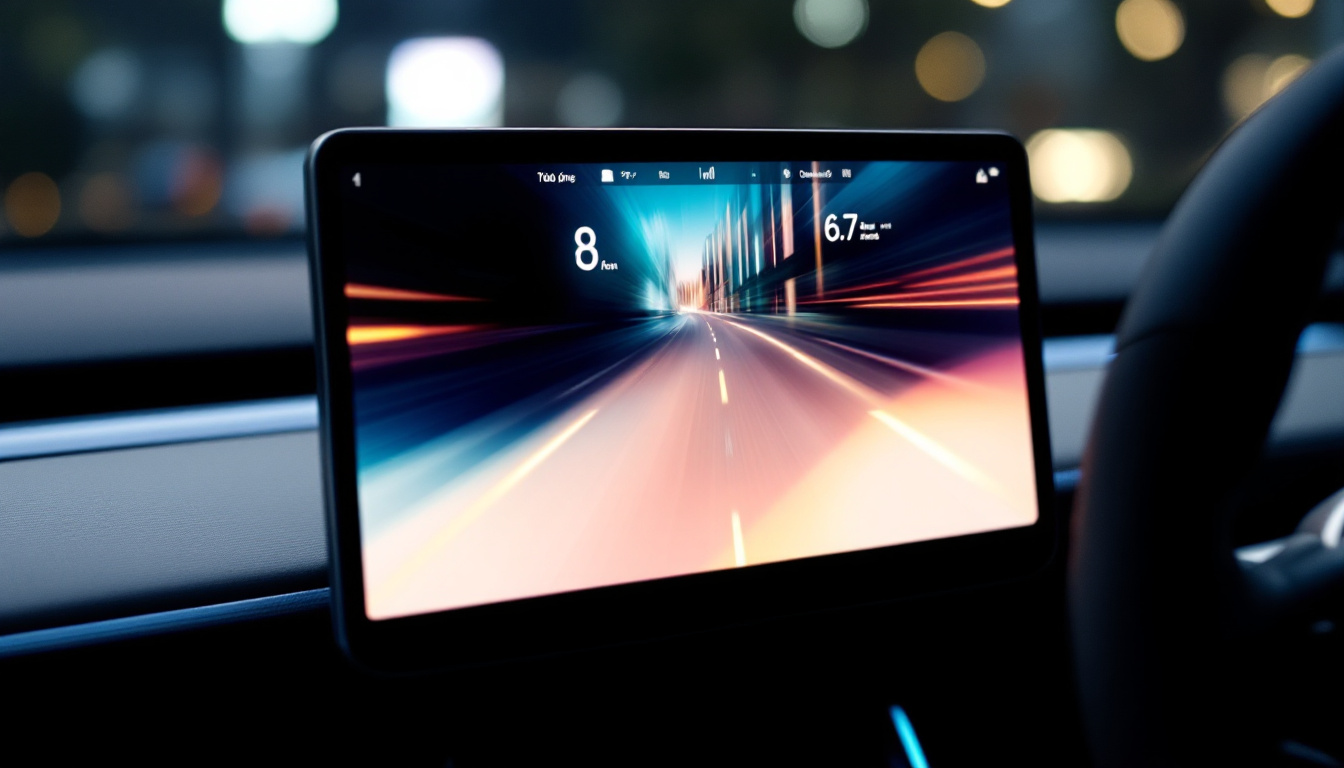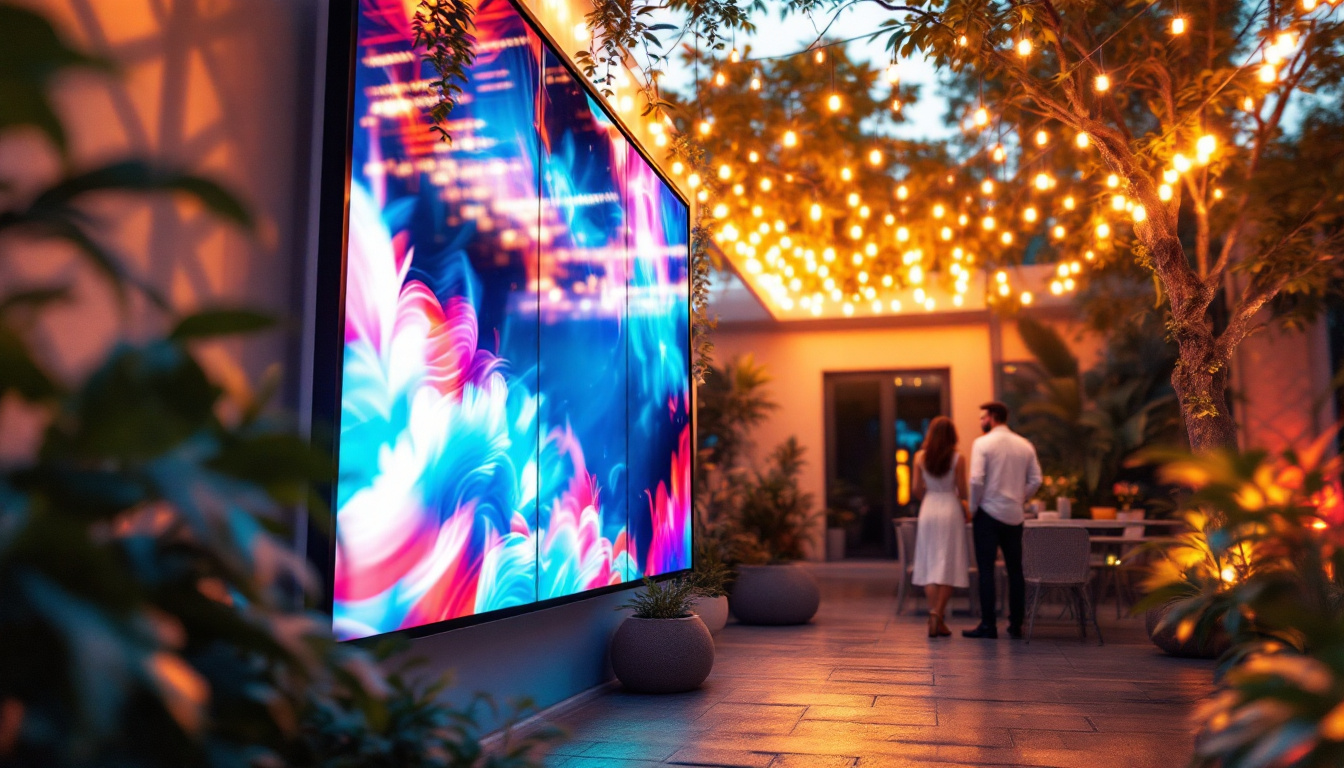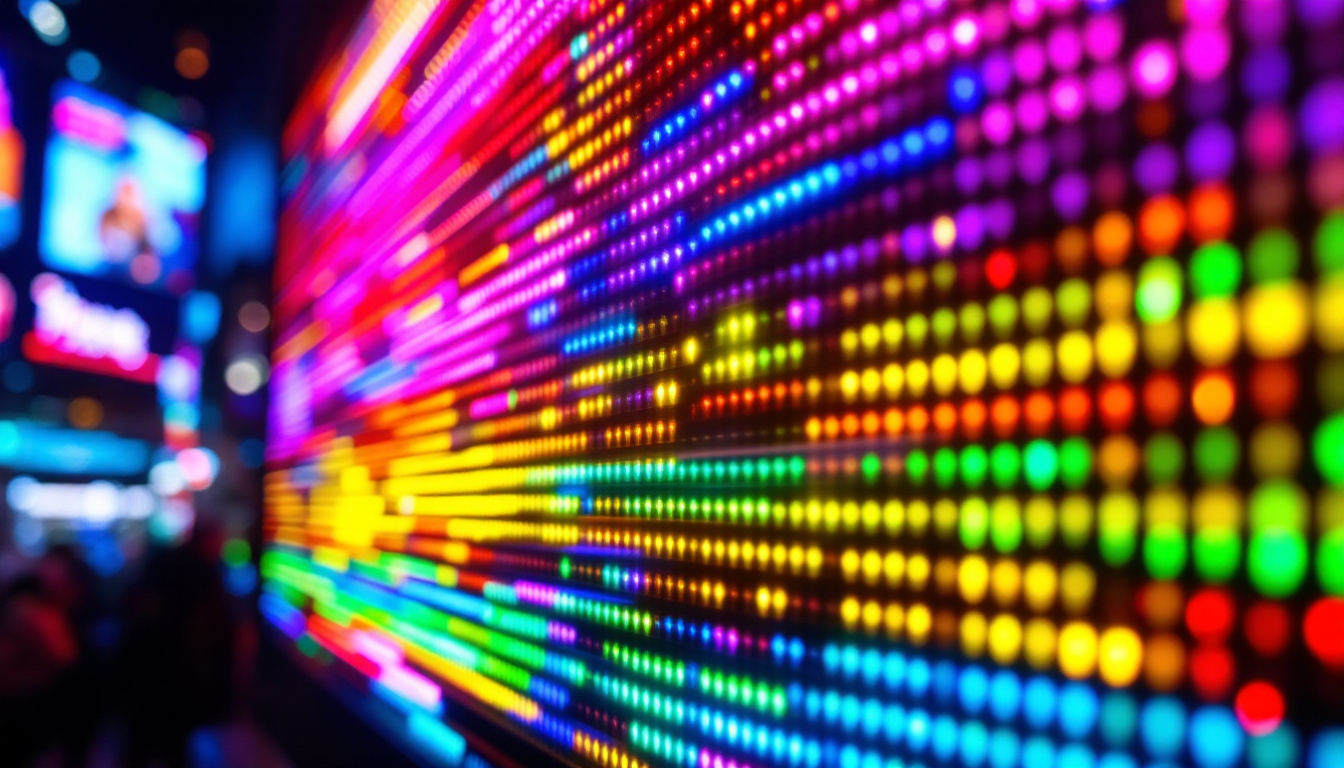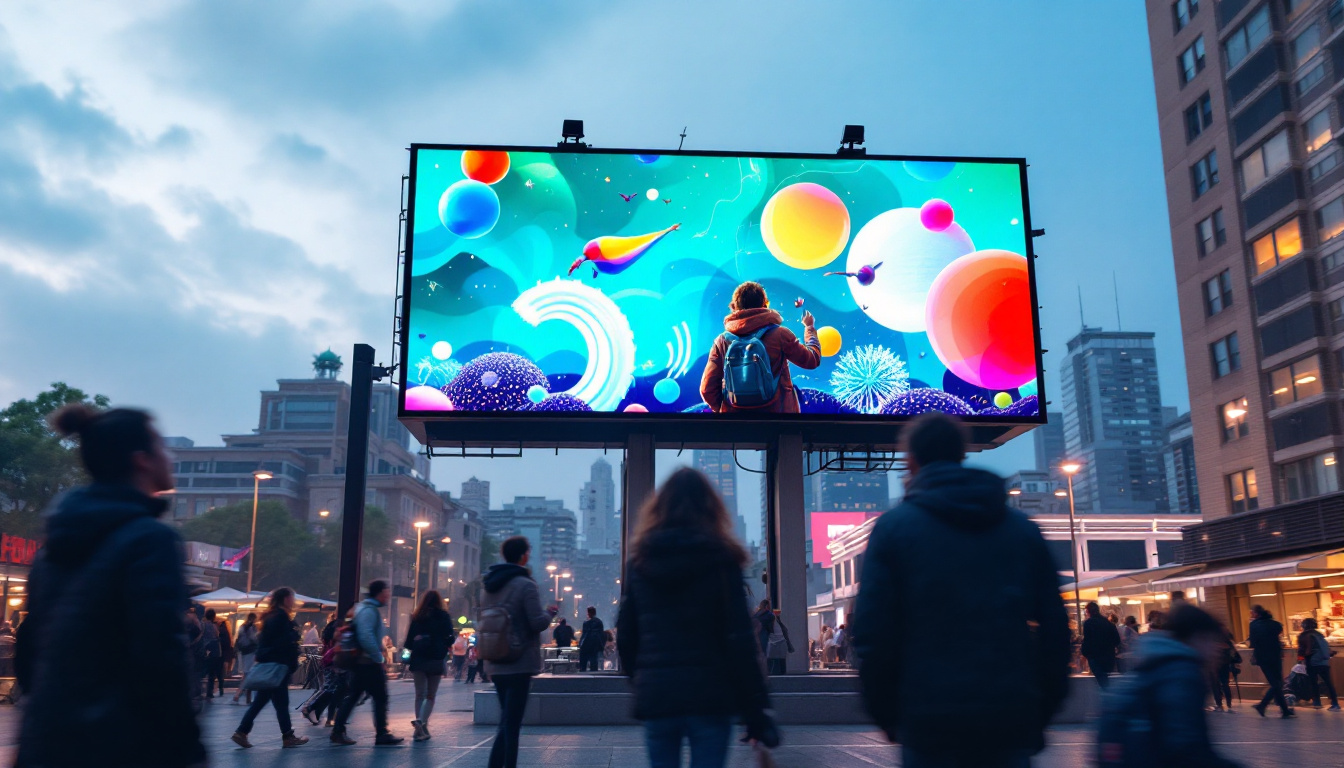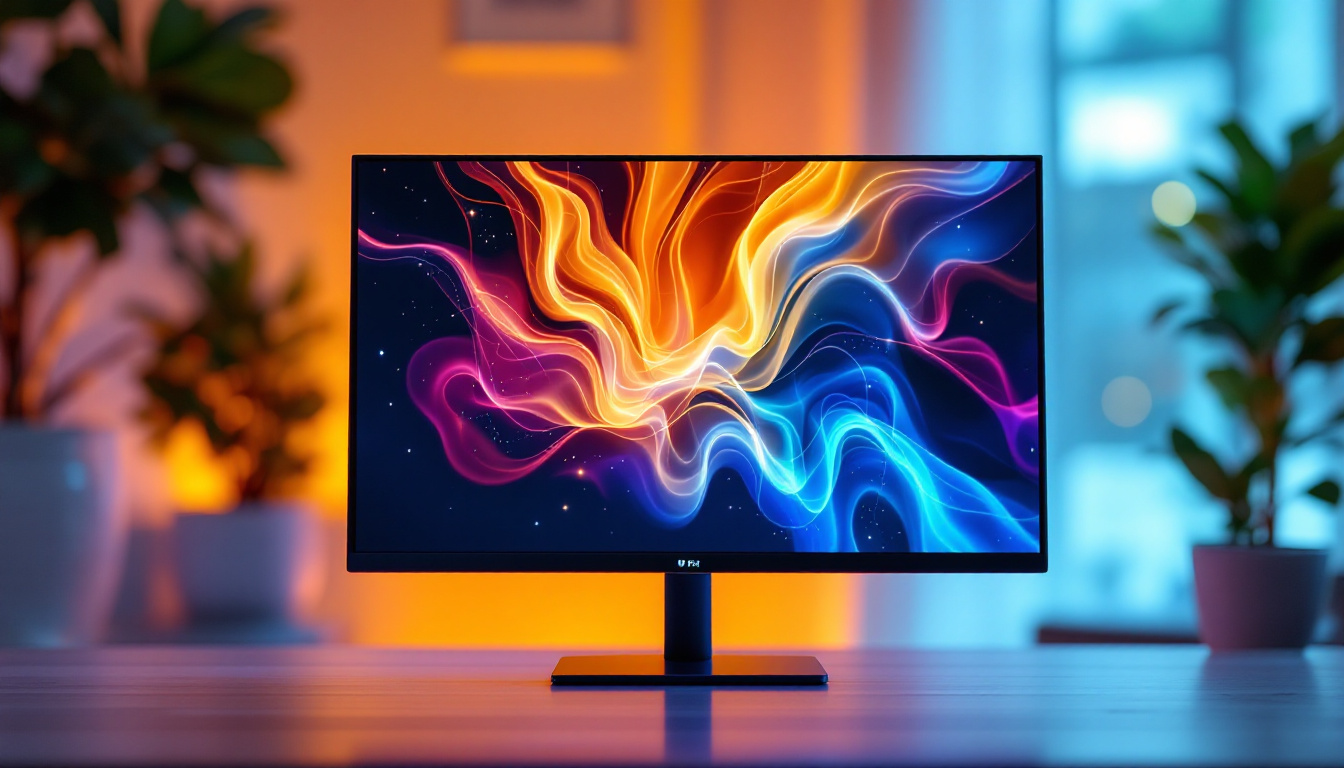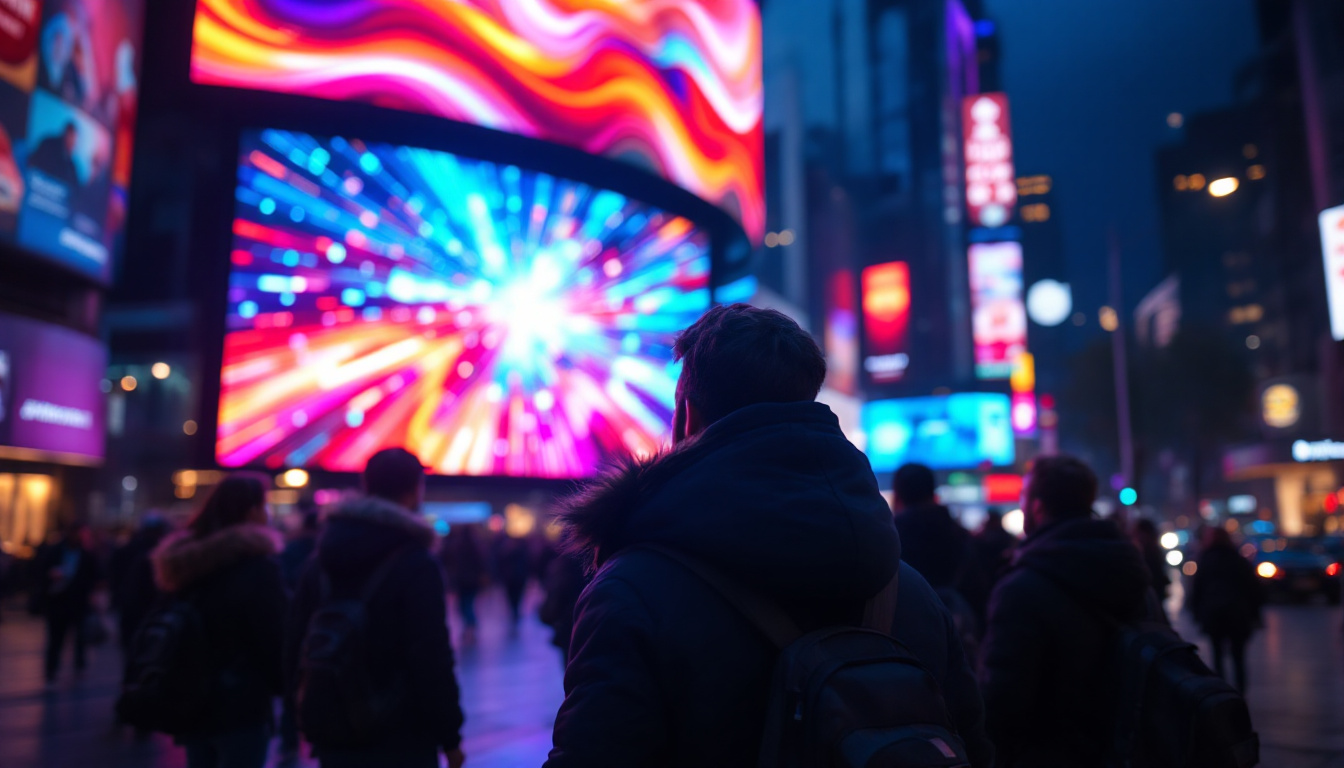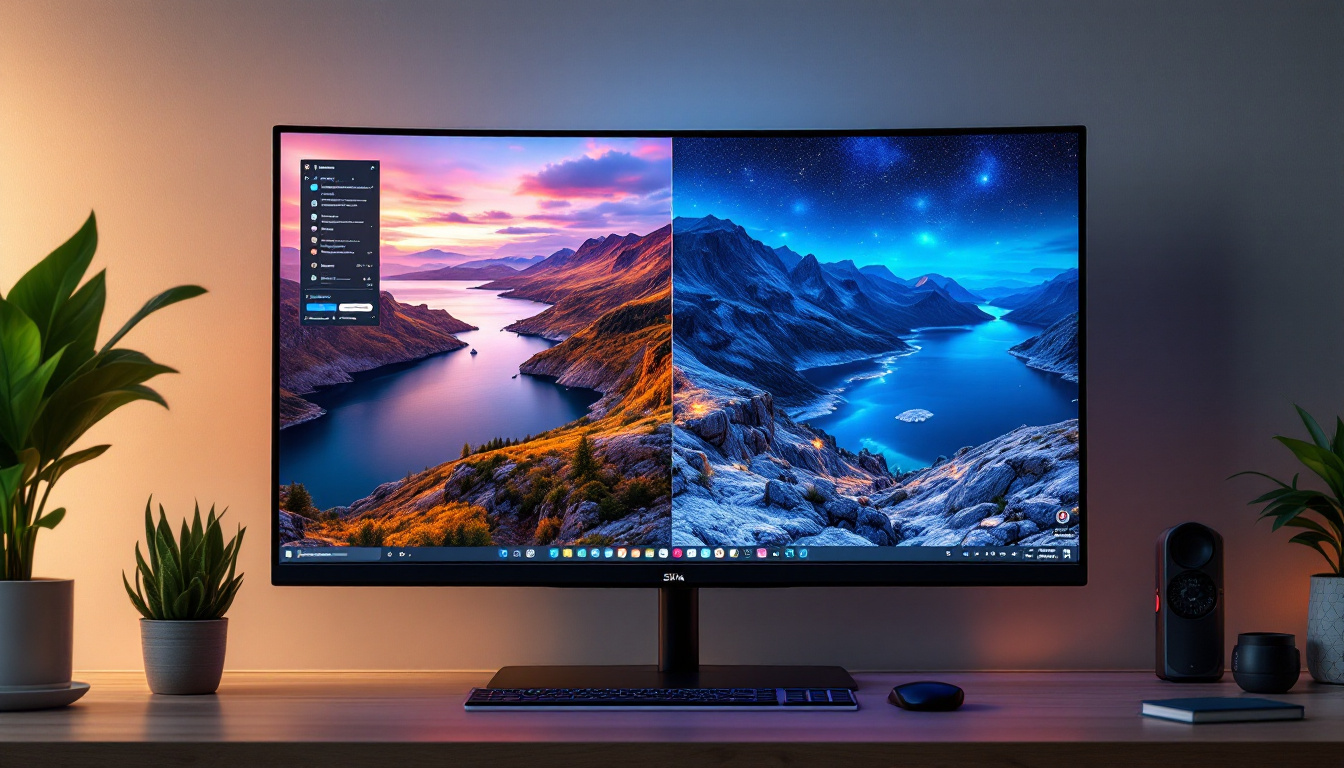In the age of digital entertainment, the demand for high-quality visual displays has surged. Among various options available, projector screens have gained significant popularity, especially the 50-inch models. These screens, when paired with LED projectors, can transform any space into a mini-theater or a professional presentation venue. This article delves into the intricacies of 50-inch projector screens and the technology behind LED displays, exploring their features, benefits, and applications.
Understanding Projector Screens
Projector screens serve as the canvas for images and videos projected from a device. They come in various sizes, materials, and formats, with the 50-inch screen being a popular choice for both home and office use. This size strikes a balance between portability and visibility, making it ideal for small to medium-sized rooms. The versatility of a 50-inch screen allows it to fit comfortably in a variety of settings, from cozy living rooms to conference rooms, ensuring that everyone can enjoy a clear and engaging visual experience.
Types of Projector Screens
There are several types of projector screens available in the market, each designed for specific environments and uses. The most common types include:
- Fixed Frame Screens: These screens are permanently installed and provide a flat surface for projection. They are ideal for dedicated home theaters, where a seamless viewing experience is paramount.
- Pull-Down Screens: These retractable screens can be pulled down when needed and rolled up when not in use, making them perfect for multi-purpose rooms. Their flexibility allows users to transform a space quickly for movie nights or business presentations.
- Portable Screens: Designed for easy transport, these screens can be set up quickly in various locations, making them suitable for presentations and outdoor events. Their lightweight designs often include carrying cases, making them a favorite among educators and traveling professionals.
Each type has its advantages and is chosen based on the intended use, available space, and budget considerations. For instance, while fixed frame screens offer superior image quality, portable screens provide unmatched convenience for on-the-go presentations.
Screen Materials and Their Impact
The material of a projector screen significantly affects the quality of the projected image. Common materials include:
- Matte White: This is the most common material, providing excellent color accuracy and viewing angles. It is particularly favored in environments where color fidelity is critical, such as in art studios or design presentations.
- High Gain: These screens reflect more light, making them suitable for bright environments but may compromise viewing angles. They are often used in commercial settings where ambient light is unavoidable, ensuring that images remain vibrant and visible.
- Ambient Light Rejecting (ALR): Designed to minimize the impact of ambient light, these screens are perfect for rooms with windows or other light sources. ALR screens utilize advanced technology to enhance contrast and clarity, making them a go-to choice for modern home theaters.
Choosing the right material is crucial for achieving the best viewing experience, particularly when using LED projectors. The interplay between the projector’s brightness and the screen’s reflective properties can make or break a viewing session, especially in environments with varying light conditions. Additionally, some screens come with special coatings that enhance durability and resistance to wear, ensuring that they maintain their quality over time, even with frequent use.
The Role of LED Technology in Projectors
LED projectors have revolutionized the way visual content is displayed. Unlike traditional projectors that use lamps, LED projectors utilize light-emitting diodes to produce images. This technology offers several advantages, including longer lifespan, lower energy consumption, and better color accuracy.
Advantages of LED Projectors
LED projectors are becoming increasingly popular due to their numerous benefits:
- Longevity: LED lights can last up to 30,000 hours, significantly reducing maintenance and replacement costs.
- Energy Efficiency: These projectors consume less power compared to traditional lamp-based projectors, making them more environmentally friendly.
- vibrant colors: LED technology provides a wider color gamut, resulting in more vivid and lifelike images.
These advantages make LED projectors an attractive option for both casual users and professionals alike. Additionally, the compact size of LED projectors allows for greater portability, enabling users to easily transport them for presentations, movie nights, or gaming sessions. This flexibility has made them a favorite among educators and business professionals who require reliable and high-quality visual aids on the go.
How LED Projectors Work
Understanding the mechanics of LED projectors can help users appreciate their capabilities. LED projectors work by using three separate LEDs—red, green, and blue—to create a full-color image. The light from these diodes is directed through a series of optical components that combine and project the image onto the screen.
This method not only enhances color accuracy but also improves brightness and contrast, making LED projectors suitable for various lighting conditions. Furthermore, the absence of a bulky lamp means that LED projectors can achieve a more compact design, which is particularly beneficial for home theater setups where space may be limited. The quick start-up time of LED projectors also means that users can enjoy instant viewing without the lengthy warm-up periods associated with traditional projectors, making them ideal for spontaneous movie nights or last-minute presentations.
Choosing the Right 50-Inch Projector Screen
Selecting the right projector screen is essential for maximizing the performance of an LED projector. Several factors should be considered to ensure compatibility and optimal viewing experience.
Aspect Ratio Considerations
The aspect ratio of a projector screen is crucial for matching the content being displayed. Common aspect ratios include:
- 16:9: This is the standard for most HD content, making it ideal for movies and television shows.
- 4:3: Often used for presentations and older video formats, this ratio is less common in modern applications.
- 2.35:1: This widescreen format is used for cinematic presentations, providing a more immersive experience.
Choosing the correct aspect ratio ensures that the projected image fits the screen without distortion or cropping.
Screen Gain and Viewing Distance
Screen gain refers to the reflectivity of the screen material. A higher gain means the screen reflects more light, which can be beneficial in brightly lit rooms. However, it can also lead to narrower viewing angles. Therefore, it is essential to consider the viewing distance and seating arrangement when selecting a screen with the appropriate gain.
For a 50-inch screen, a viewing distance of approximately 6 to 8 feet is recommended for optimal image clarity and comfort.
Applications of 50-Inch Projector Screens
50-inch projector screens find applications in various settings, from home entertainment to professional environments. Their versatility makes them a popular choice for a wide range of users.
Home Entertainment
In home theaters, a 50-inch projector screen paired with an LED projector can create an immersive viewing experience. Whether watching movies, playing video games, or streaming content, this setup provides a cinematic feel without the need for a large dedicated space.
Additionally, many families appreciate the ability to host movie nights or gaming sessions, making this size an excellent choice for entertainment.
Business Presentations
In professional settings, 50-inch projector screens are commonly used for presentations and meetings. Their compact size allows for easy setup in conference rooms or during on-site meetings, ensuring that all participants can view the content clearly.
Moreover, the vibrant colors and clarity provided by LED projectors enhance the overall impact of presentations, making them more engaging and effective.
Installation and Setup Tips
Proper installation and setup of a 50-inch projector screen can significantly enhance the viewing experience. Here are some tips to consider:
Mounting Options
Depending on the type of screen, users can choose between wall mounting, ceiling mounting, or using a portable stand. Wall-mounted screens are ideal for permanent setups, while portable screens offer flexibility for various locations.
Ensuring the screen is mounted at the correct height is crucial for comfortable viewing. The center of the screen should ideally be at eye level when seated.
Optimal Lighting Conditions
Lighting plays a vital role in the quality of the projected image. For the best results, it is recommended to use the projector in a darkened room or to utilize ambient light-rejecting screens in brighter environments. This will help in achieving better contrast and color accuracy.
Additionally, controlling the light source, such as closing curtains or blinds, can enhance the viewing experience significantly.
Maintenance of Projector Screens
To ensure longevity and optimal performance, regular maintenance of projector screens is essential. Here are some best practices:
Cleaning the Screen
Dust and smudges can accumulate on the surface of the screen, affecting image quality. It is advisable to clean the screen regularly using a soft, lint-free cloth. For more stubborn stains, a mild soap solution can be used, but care should be taken not to damage the screen material.
Checking Connections and Settings
For optimal performance, regularly check the connections between the projector and the screen. Ensure that cables are secure and not damaged. Additionally, adjusting the projector settings can help in achieving the best image quality.
Conclusion
In conclusion, a 50-inch projector screen paired with an LED projector offers a versatile solution for both entertainment and professional use. Understanding the various types of screens, the advantages of LED technology, and the factors to consider when choosing a screen can help users make informed decisions. With proper installation, maintenance, and optimal usage, these screens can provide a high-quality viewing experience for years to come.
Whether for home theaters, business presentations, or casual movie nights, the combination of a 50-inch projector screen and LED technology creates a dynamic and engaging visual experience. Embracing this technology can elevate any viewing experience, making it a worthwhile investment for anyone seeking quality visual displays.
Discover LumenMatrix’s Advanced LED Display Solutions
Ready to elevate your visual experience with the latest in LED display technology? LumenMatrix, a pioneer in innovative LED solutions, offers a wide range of products designed to bring your visual presentations to life. From immersive Indoor LED Wall Displays to dynamic Outdoor LED Wall Displays, and from versatile Vehicle LED Displays to engaging LED Sports Displays, LumenMatrix has the perfect solution to fit your needs. Experience the difference with our state-of-the-art LED displays that promise to enhance engagement and communicate your message with unparalleled clarity. Check out LumenMatrix LED Display Solutions today and transform your space into a captivating visual showcase.

